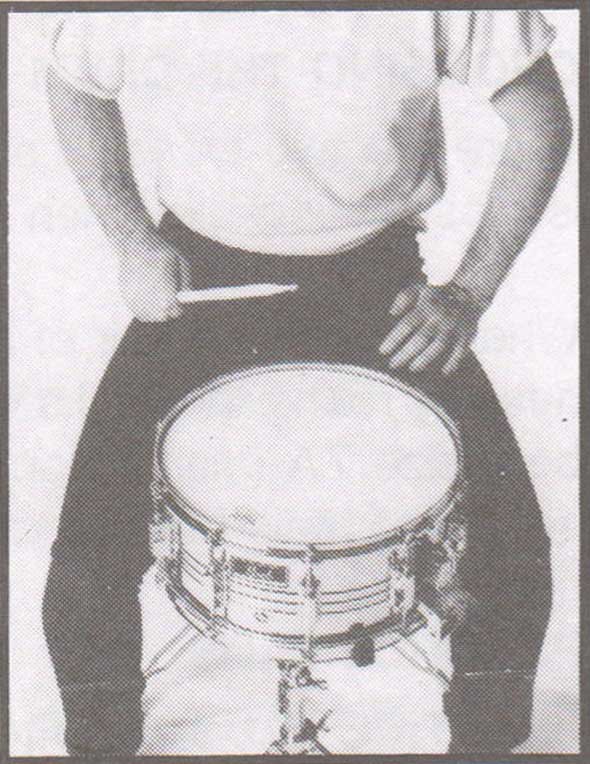
Holding the Drum Sticks
There are two accepted ways of holding the sticks, they are :
- The Traditional Grip (Photo. 1).
- The Matched Grip (Photo. 2).


The Traditional Grip
The right hand stick is held between the inside of the thumb and first joint of the index finger (about 1/3 of the way down from the butt of the stick). The remaining fingers are wrapped lightly around the stick (Photo. 1).
To make a clean tap with the right hand you must move your wrist in a downward motion allowing the tip of the stick to strike the snare drum cleanly and then bring it back up to its original position (Photo 1a, b, c). By repeating this you will soon develop a smooth right hand action.



The left hand stick is held deep in the crotch of the thumb and first finger. it rests between the second and third finger, between the first and second joints (about 1/3 of the way down from the butt of the stick) (Photo. 1).
To make a clean tap with the left hand you must move your wrist and forearm in an inward and downward motion. allowing the tip of the stick to strike the drum cleanly and then bring it back to its original position (Photos. 1d, 1e, 1f). By repeating this you will soon develop a smooth left hand action and be ready to proceed to more snare drum work.



The Matched Grip
The right and left hand hold the sticks in exactly the same way as the right hand in the traditional grip (Photo. 2).
To make a clean tap with either hand you can repeat the stick movements in (Photos. 1a, 1b, 1c).
The matched grip is the style commonly used by rock drummers as it feels natural and more comfortable to play. The traditional grip is widely used by jazz, military band and orchestral drummers.